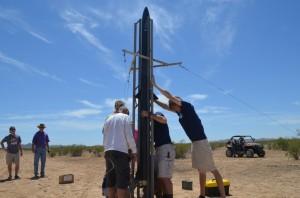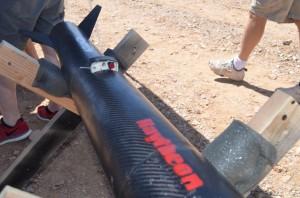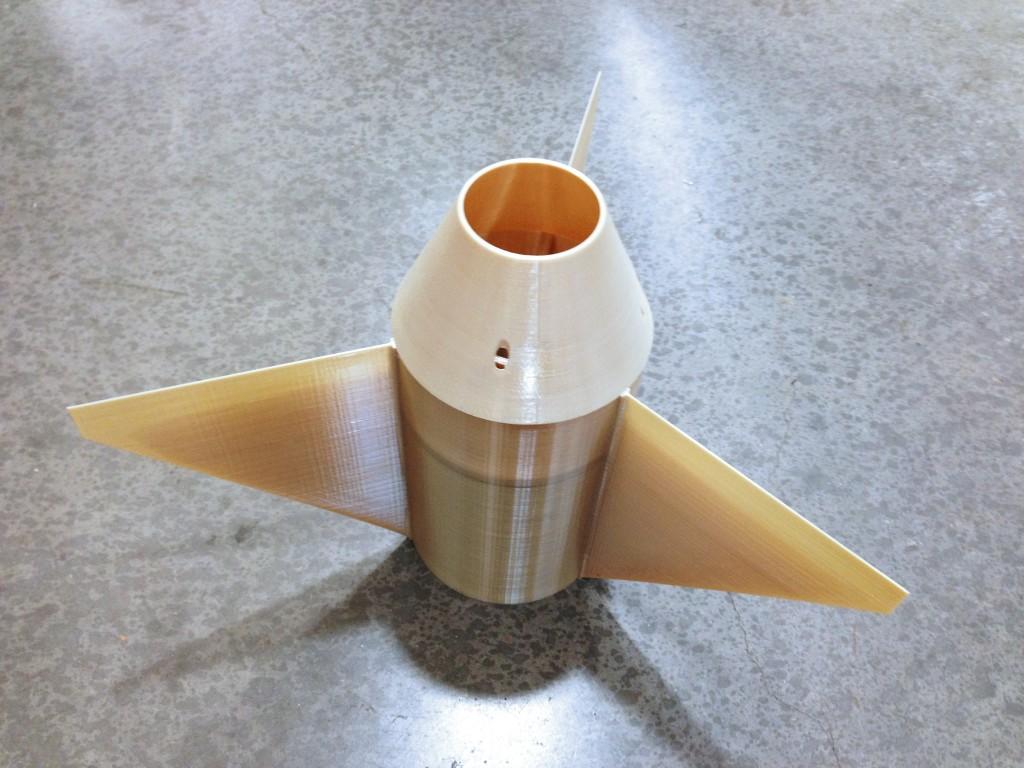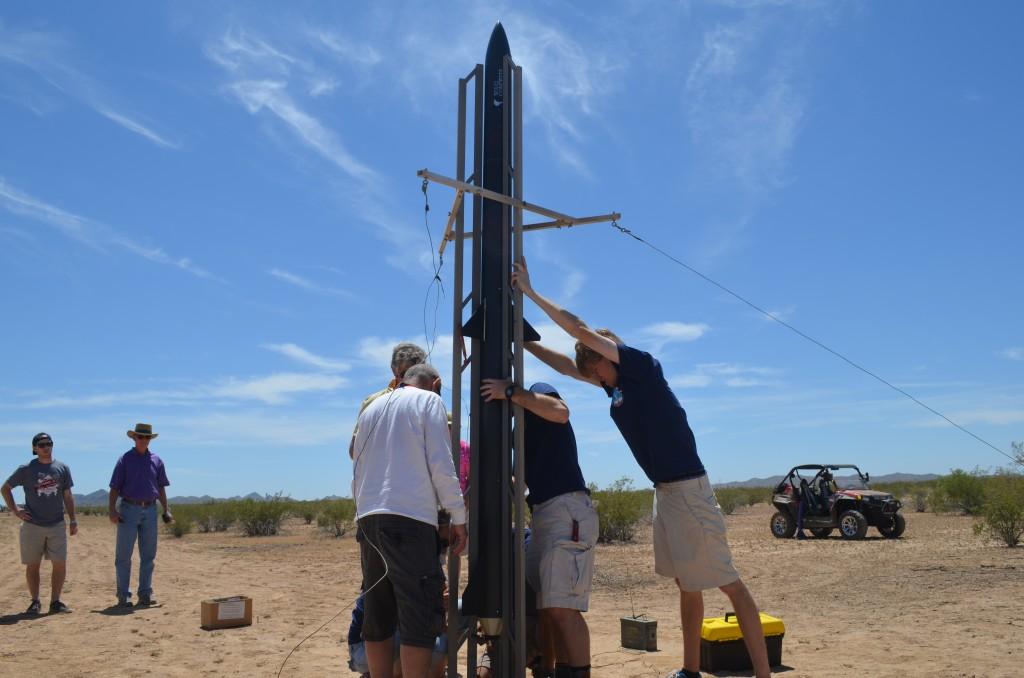 Senior Matthew Dusard and a team of fellow students decided it was time to fix some of the problem areas that he had encountered in high-powered rocketry as part of his senior design project. To create the parts with the needed modifications, he turned to 3D printing as a means for a solution. Working with Solid Concepts, an additive manufacturing company, he was surprised to learn that the costs for printing the components was not as high as he had initially expected. As a result, he was able to move forward with the project and actually win the award for Best Overall Design at the Design Showcase of the University of Arizona.
Senior Matthew Dusard and a team of fellow students decided it was time to fix some of the problem areas that he had encountered in high-powered rocketry as part of his senior design project. To create the parts with the needed modifications, he turned to 3D printing as a means for a solution. Working with Solid Concepts, an additive manufacturing company, he was surprised to learn that the costs for printing the components was not as high as he had initially expected. As a result, he was able to move forward with the project and actually win the award for Best Overall Design at the Design Showcase of the University of Arizona.
Dusard recalls his introduction to 3D printing through an internship:
“A part I had designed required form and fit assembly testing; we 3D printed a replica suing Sterolithography. My fascination with 3D printing began there while watching the SLA part grow in the machine and stayed with me throughout college. For my senior design project this year, I knew 3D printing would be crucial…”
One of the ways in which 3D printing proved to be an advantage over other construction techniques was the ability it provided to create components that were a single piece, rather than requiring the assembly of several. Dusard points to the fin structure that was created with Fused Deposition Modeling (FDM) as a perfect example. Without 3D printing the piece would have required the assembly of seven pieces and taken three days to complete. Instead, the team was able to have the piece ready in a single day.
The benefits of additive manufacturing were deeper than just the time that was saved. The design for the sustainer aft body system that the team was able to create because of 3D printing resulted in an 85% increase in efficiency over the typical rounded flat plate design. This is because they were able to create incredibly precise curvatures and spacings for the rocket mount fins that would have been nearly impossible without the kind of intricate detail allowed by 3D printing.

Electronics slide and arming switch
Another contribution to the rocket’s success that was made by 3D printing was an improvement in the on board computer’s accessibility. A problem that the team noticed right away was that in order to access the flight computers in the event of a problem, the rocket had to be disassembled. This took an inordinate amount of time and as the team was on a tight schedule, was a problem that desperately needed to be addressed. Using what he had learned about circuitry in an internship, Dusard suggested to the others that 3D circuit mounts be printed. These allowed the electronics to be pulled in and out of the side of the rocket and significantly shortened any delays caused when they malfunctioned.
Dusard’s introduction to the world of 3D printing through his internship really paid off for him and his team and is a tribute to the types of benefits that students receive when they pair their creativity with a knowledge of 3D technologies.
Let us know what you think about this interesting application of 3D printing, in the 3D printed rocket forum thread on 3DPB.com. Check out the video below to see these rockets in action.
Subscribe to Our Email Newsletter
Stay up-to-date on all the latest news from the 3D printing industry and receive information and offers from third party vendors.
Print Services
Upload your 3D Models and get them printed quickly and efficiently.
You May Also Like
Consolidation in AM: How 2025 Is Shaping the Industry’s New Normal
The first half of 2025 has been marked by a clear shift in the additive manufacturing (AM) industry. Companies are no longer just focused on developing new tech by themselves....
Etsy Design Rule Change Reduces Selection of 3D Printed Goods
Online marketplace Etsy has implemented a rule change requiring all 3D printed goods on the site to be original designs. The update to the site’s Creativity Standards states, ¨Items produced using...
U.S. Congress Calls Out 3D Printing in Proposal for Commercial Reserve Manufacturing Network
Last week, the U.S. House of Representatives’ Appropriations Committee moved the FY 2026 defense bill forward to the House floor. Included in the legislation is a $131 million proposal for...
Transforming From Tourist to Native: Duro CEO Michael Corr Explains Why the Company Rebuilt its PLM Software on AI
In these early innings of the AI boom, many market analysts have expressed concern that AI spend has gotten too far ahead of the technology’s proven ability to deliver significant...


































